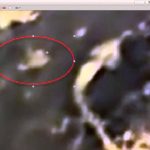Madagascar. The Children of Lemuria (Full Documentary)
Madagascar is an island located in the Indian Ocean inhabited by only creatures whose origin is still unknown. Lemurs are the most representative animals of Madagascar.
▶ SUBSCRIBE! Full Documentaries every Tuesday, Thursday and Saturday!
▶ Documentary “Madagascar. The Children of Lemuria”
There is a beautiful legend which speaks of the South Atlantis, the sunken continent of Lemuria. There, there were dense ancient jungles inhabited by beings different from any others ever known; unique creatures which arose in an independent world, isolated from the rest of the continents.
There, the reptiles still ruled over the land, the plants acquired surprising forms, and in the thicket, hidden in the shadows of the jungle, lived strange men, silent, graceful ghosts, relatives of our own species, which were given the generic name of lemurs, the most emblematic inhabitants of Lemuria. But isolated in the Indian Ocean, a fragment of that fabulous continent remained; a solitary island where the animals would jealously guard the secrets of their origins, a refuge for a wildlife that would later astonish the world: Madagascar.
Fifty million years after the peculiar mammals of Australia began their solitary life, the primitive insectivores began diversifying, evolving towards the groups from which would emerge the lemurs, all the monkeys of the world and even man: the primates.
And at this crucial point in the history of evolution, Madagascar began its existence in isolation.
The mammals were still a primitive prototype in the jungles of this new Lemuria. Parson’s chameleon, the largest chameleon in the world is a descendent of those reptiles torn from the continent of Africa when Madagascar became independent, and perhaps the most representative; because the chameleons have diversified here more than any other place in the world. Today, over half of all existing species of chameleons live on and are endemic to the island, and they have become the most numerous reptiles in Madagascar. It has been calculated that in Madagascar there are close to 200,000 different species of living beings, of which 150,000 are exclusive to the island.
The modern primates are descendents of those first mammals, those tiny insectivores that hid in the jungles of Gondwana. Today, they have colonised all the continents, and the most adaptable species of all, man, has conquered the entire planet. But at a time when mammals had not even begun to develop their incredible capacity for generating new species, Madagascar had separated from Africa and had remained isolated in the Indian Ocean. How then can we explain the existence there of the enigmatic pro-simians which we now call lemurs?
In Madagascar there are 33 species of lemurs. All lemurs are herbivores and insectivores, and if resources are abundant, they avoid competition, being tolerant and even playful with other species.
The lemurs are the most representative animals of Madagascar, and the ones with the most mysterious origin. Lemur is a Latin word that meaning “the spirit of the dead”.
The ring-tailed lemurs are the most and best studied of all Madagascan mammals.
Madagascar continues to change. Many of the living beings of Madagascar still remain to be discovered. They are secrets that Lemuria still keeps for its ghosts, for the silent beings that arose from millions of years of solitude.
The most recent genetic analyses indicate that all the lemurs derive from a single colonising species similar to the present-day mouse lemurs or dwarf lemurs. The bamboo lemurs, the smallest of all diurnal lemurs, are an example of the critical situation of the exclusive animals of the island. Madagascar is terribly fragile.
Humanity anxiously looks to the infinite solitude of the universe dreaming of other inhabited worlds. And, paradoxically, an entire world of fascinating, unknown creatures is disappearing before our very eyes, taking with it the secret of the origin of those mysterious children of Madagascar, the legendary Lemuria.
Leave A Reply
You must be logged in to post a comment.









 Paranormal
Paranormal

